The Evolution of a Downtown Property
The property currently known as the Hilton St. Louis at the Ballpark has gone through considerable changes in the last 45 years. After the 1964 World’s Fair in NYC Â St. Louis mayor Cervantes convinced civic leaders to pay $6 million dollars to buy the Spanish Pavilion and bring it to downtown St. Louis.
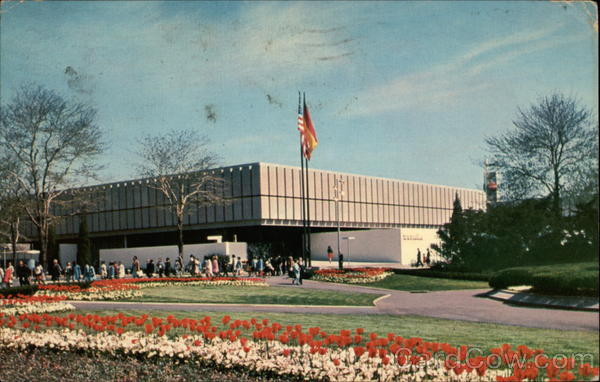
No towers, just a low-rise tourist attraction that didn’t attract tourists for long. A 1989 KSDK story (w/video) fills in some of the details. Basically the first tower was added in 1976, following the bankruptcy of the pavilion. Â It was known as the Breckenridge Inn. Later it became a Marriott and the second tower was built to the west.
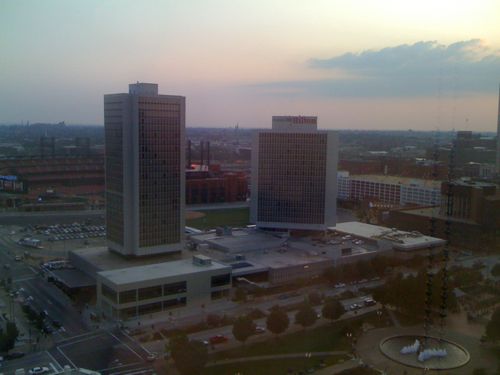
A few years ago the Marriott became the Hilton St. Louis at the Ballpark. An addition was built at the NE corner of the property to expand the lobby bar.
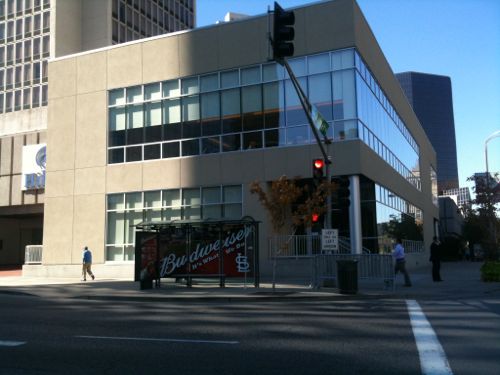
But it’s the latest addition that has many impressed, including me. Â For a while now a steel & glass structure was constructed on the roof of the first tower.
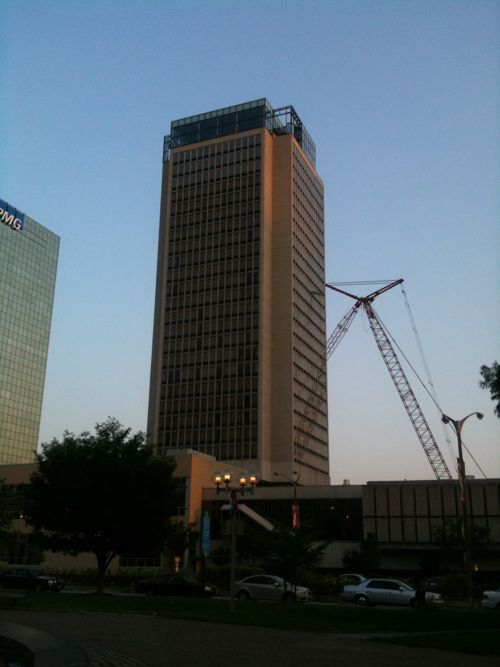
The new space is occupied by Three Sixty:
Soaring nearly 400 feet above downtown St. Louis, Three Sixty is the ultimate rooftop bar. Located atop the perfectly positioned Hilton St. Louis at the Ballpark, Three Sixty offers sweeping views in all directions – hence the name – including a birds’ eye view right into Busch Stadium. With a cocktail in hand and a tasty bite to savor, it is the perfect perch to take in the Cardinals, the Gateway Arch, the mighty Mississippi and the sites of St. Louis near and far.
Open daily at 3 pm, Three Sixty has an extensive wine, beer and cocktail selection as well as a delicious assortment of small plate fare expertly prepared by Chef Rex Hale. Hale, whose culinary experience has taken him to kitchens around the world, has created a menu that’s globally inspired but bursting with locally sourced ingredients. Signature items include Mini New England Lobster Rolls, New York Strip Crostini and Roasted BBQ Oysters. There is also a Woodstone gas firedeck oven that reaches the ideal temperature to produce perfectly cooked pizzas.
The stunning 6,000 square-foot space features indoor and outdoor seating, accommodating guests year-round with its flexible layout. With a giant outside bar, several indoor bars, an open kitchen, a dramatic wine wall, flat-screen TVs, Zen-like fire pits and contemporary styling, its sleek, urban vibe is a perfect addition to the downtown entertainment scene. Already known for its stellar location and first-class amenities, the Hilton St. Louis at the Ballpark has now been crowned with a rooftop bar on par with the best in the country.
Thursday night I joined the group City Affair at Three Sixty – for three hours.
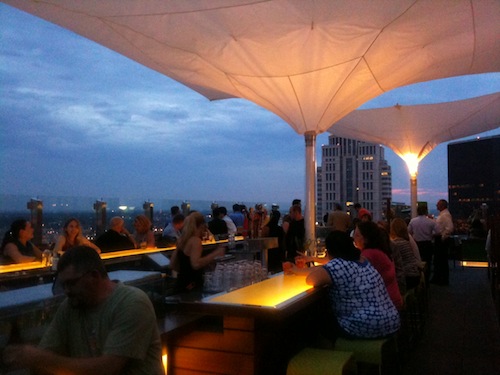
It was the first night of decent weather since they opened. There is lots of seating indoors as well as out but both were packed. Â The artichoke pizza I had ($14) was excellent as was the local Urban Chestnut Winged Nut on draft ($6). The views were outstanding!
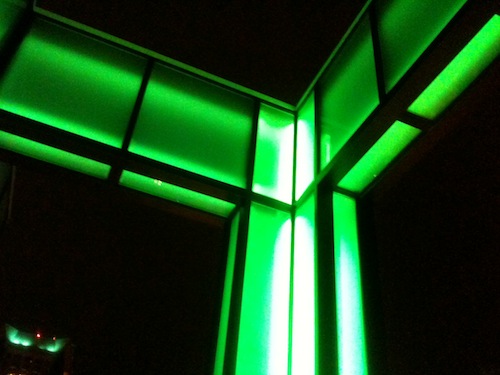
The take away is buildings are rarely static, they change slowly over time to meet our changing tastes and uses for them.
– Steve Patterson
“The take away is buildings are rarely static, they change slowly over time to meet our changing tastes and uses for them.” The same is even more true of neighborhoods.  Yet, both statements are at cross purposes with the current interpretation of historic “preservation”, as currently practiced and implemented. True preservationists would look at the tower additions as abominations, as would altering the Spanish Pavilion from the 1904 World’s Fair. But, since this was from the 1964 Fair, it’s somehow less important or worthy?
Bigger picture, I agree, buildings (and neighborhoods) do need to evolve to meet our changing needs. How do you balance that with our apparent obsession with the single-occupant vehicle as our overwhelming choice for personal transportation? It has had a HUGE impact on how our cities are built, how our buildings are sited, how we live our daily lives – in short, it’s been a major change, as well as a slow one.
When the original pavilion was in New York, the vast majority of people walked into it, much like an exhibit at the zoo (I know, I was there). Today, the vast majority drive to it, and its primary entrance is through an autocentric porte cochere / valet parking station. Which answer is more appropriate? More “right”? And, have the multiple alterations completely destroyed any of the mid-century modern character that the original structure may have had? Is it even still “historic”?
“The take away is buildings are rarely static, they change slowly over time to meet our changing tastes and uses for them.” The same is even more true of neighborhoods. Yet, both statements are at cross purposes with the current interpretation of historic “preservation”, as currently practiced and implemented. True preservationists would look at the tower additions as abominations, as would altering the Spanish Pavilion from the 1904 World’s Fair. But, since this was from the 1964 Fair, it’s somehow less important or worthy?
Bigger picture, I agree, buildings (and neighborhoods) do need to evolve to meet our changing needs. How do you balance that with our apparent obsession with the single-occupant vehicle as our overwhelming choice for personal transportation? It has had a HUGE impact on how our cities are built, how our buildings are sited, how we live our daily lives – in short, it’s been a major change, as well as a slow one.
When the original pavilion was in New York, the vast majority of people walked into it, much like an exhibit at the zoo (I know, I was there). Today, the vast majority drive to it, and its primary entrance is through an autocentric porte cochere / valet parking station. Which answer is more appropriate? More “right”? And, have the multiple alterations completely destroyed any of the mid-century modern character that the original structure may have had? Is it even still “historic”?
I’ve long said I’m not a preservationist. I argue to retain some buildings because they contribute positively to the urban space.
I’ve long said I’m not a preservationist. I argue to retain some buildings because they contribute positively to the urban space.
I’m so glad you posted this. I had no clue about the unique history of the hotel (which I’ve walked by hundreds of times). Keep up the good work!
I’m so glad you posted this. I had no clue about the unique history of the hotel (which I’ve walked by hundreds of times). Keep up the good work!